#treemonisha
Explore tagged Tumblr posts
Text
this post is dedicated to that one specific performance of treemonisha i saw last year that literally made me cry. bc the way that remus looked at treemonisha at the end was so pure and beautiful and i think about it very often.
3 notes
·
View notes
Text
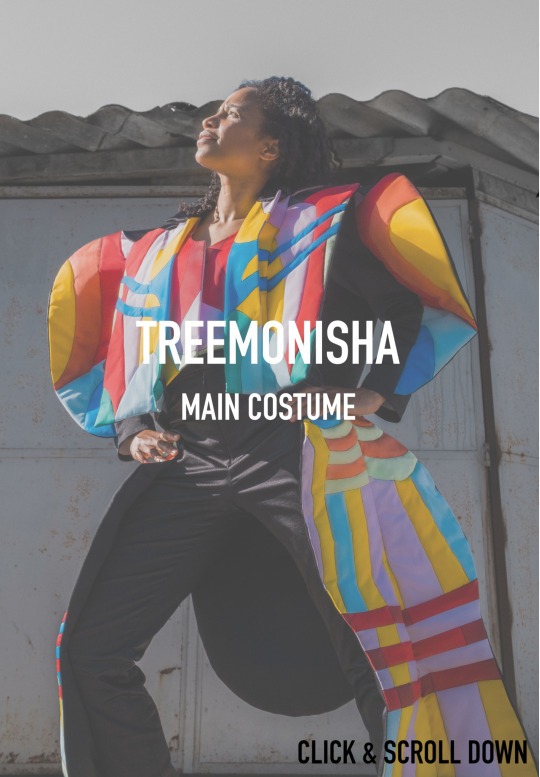

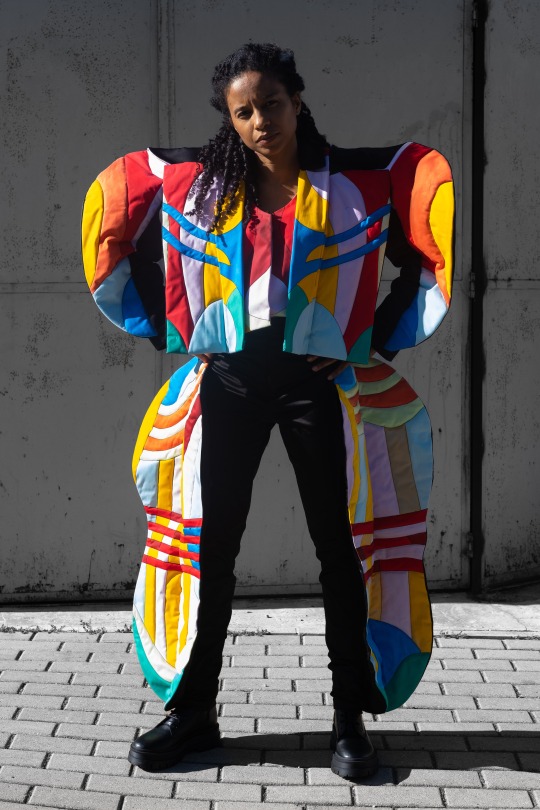
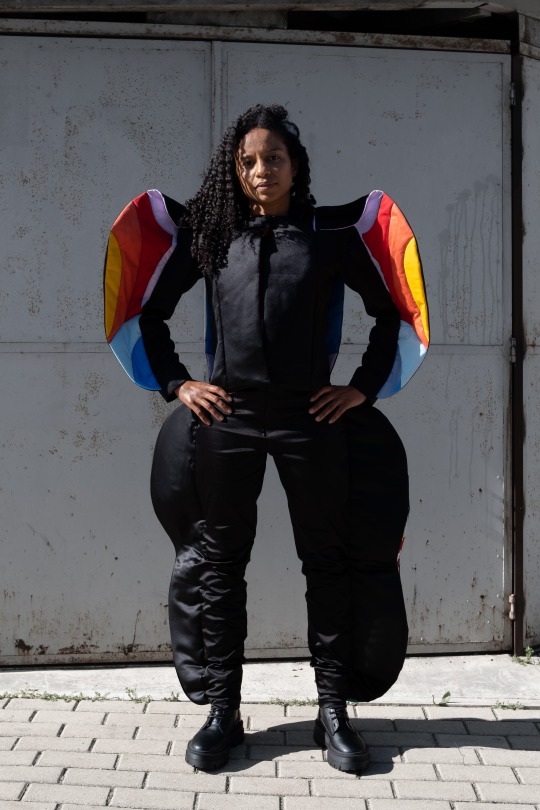
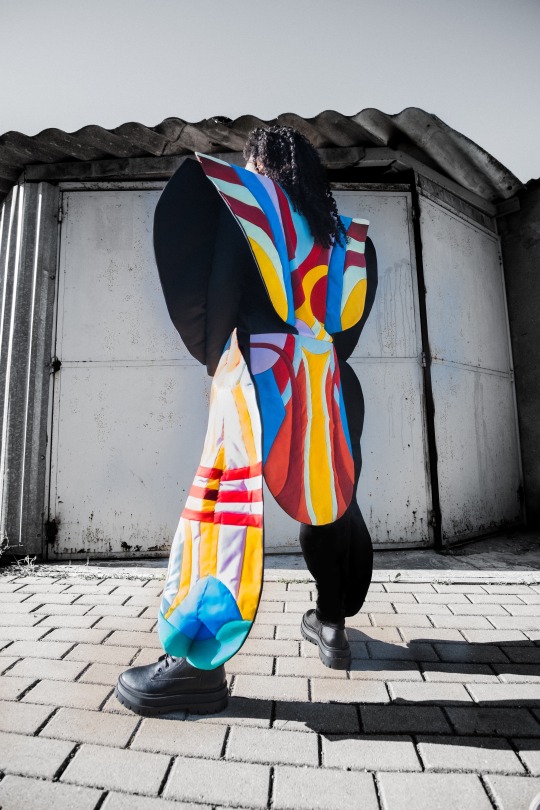
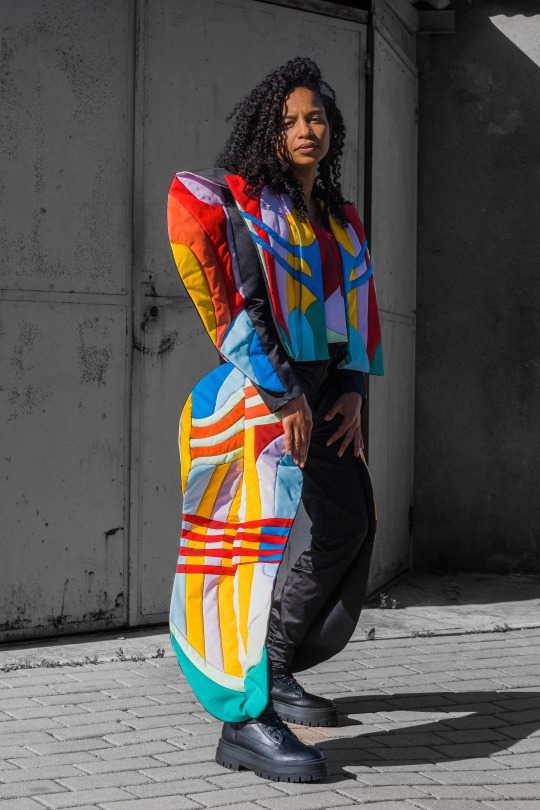
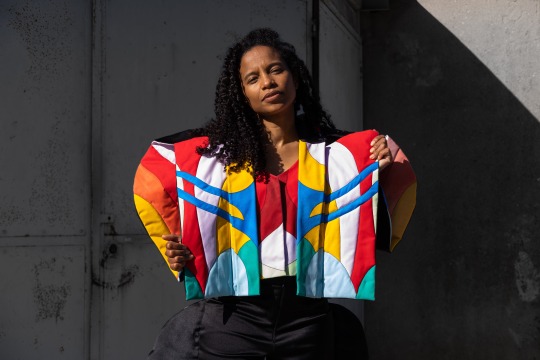
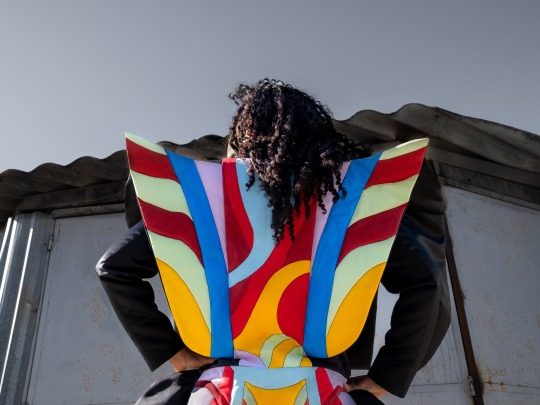
TREEMONISHA, BY SCOTT JOPLIN
COSTUME DESIGN FOR OPERA ADAPTATION.
Costume for Treemonisha, designed and made by Sofia Videira Pinto. Cotton and satin. The costume is hand-painted, quilted, and through the use of hidden magnets, it changes in three acts, every time revealing more colour. Figurino para Treemonisha, desenhado e confecionado por Sofia Videira Pinto. Cetim e algodão. O figurino é pintado à mão, acolchoado e, através do uso de ímanes, muda em três atos, sempre revelando um pouco mais de cor.
EN
Costume project for my adaptation of the 1911 opera Treemonisha.
Originally taking place in rural postbellum Arkansas, in the 1880s, a clever African-American young woman, called Treemonisha, is elected the leader of her community of sharecroppers, after showing how superstition is the enemy of progress and knowledge and education constitute the brighter way forward.
My adaptation, though, places Treemonisha in a different time and setting: in the Auto City of Detroit, during the late 1920s, after the Great Migration that led farmer communities of the south finding their way north. Treemonisha is inspired by the first African-American female pilot, Bessie Coleman, and she is herself a pioneer and a pilot. Her family and friends are mechanics and factory workers, and the dark aura of superstition is perpetuated by Zodzetrick, a vicious sorcerer. Soon enough though, Treemonisha will prove the values of an open and innovative mind to her peers, and bring music, life and colour to the ones around her.
The concept behind the costumes is the one of emerging colours through the darkness. Starting mainly black, the costumes open panels each new act, that reveal bright and lively hues. By the end of the opera, the costumes evoke a victorious festival of colour. The garments and panels are hand painted and quilted, as an homage to the African-American tradition of quilting, which played an important role in the freedom and emancipation of former slaves. The sleeves and back of the jacket, as well as the trousers, resemble the shape of an aeroplane and wings, honouring both Bessie Coleman and Treemonisha as pioneers and messengers of hope; the front of the jacket resembles a book, an ode to the importance of education within the communities.
PT
Projeto de figurinos para uma adaptação própria da ópera Treemonisha, de 1911.
Originalmente a peça toma lugar numa aldeia rural de Arkansas, após a guerra civil americana, nos anos 1880, onde uma jovem Afro-Americana corajosa e inteligente, Treemonisha, é eleita líder da sua comunidade de meeiros, depois de demonstrar como a superstição é inimiga do progresso, e a educação de todos é o caminho mais luminoso para o futuro.
Na minha adaptação, no entanto, a história desenvolve-se na cidade de Detroit (The Auto City), nos tardios anos 20, depois da Grande Migração que levou comunidades de agricultores do sul dos EUA a rumar a norte. Treemonisha é inspirada na primeira piloto Afro-Americana, Bessie Coleman, sendo ela também uma pioneira, tanto na aviação, como nos seus ideais. A sua família e amigos são, nesta adaptação, mecânicos e trabalhadores de fábricas, e a aura pesada e negra da superstição é perpetuada por Zodzetrick, um feiticeiro vicioso. No entanto, em breve, Treemonisha vai provar os valores de uma mente aberta e inovadora à sua comunidade, e trazer música e cor às suas vidas.
O conceito por trás dos figurinos tem por base as cores vivas que emergem pela escuridão. Se ao ínicio se apresentam fundamentalmente negros, os vários figurinos vão ao longo dos atos revelando novos painéis de cores vivas e vibrantes. No final da ópera, os figurinos evocam um vitorioso festival de cor. Todas as peças e painéis foram feitos e pintados à mão, e usando técnicas de quilting (colcha), em homenagem a esta tradição Afro-Americana, que teve um papel importante na libertação e emancipação de antigos escravos. As mangas e as costas do casaco, bem como as calças, são inspiradas em formas alares e de aviões, homenageando Bessie Coleman e Treemonisha, pioneiras e mensageiras de esperança; a frente do casaco assemelha-se a um livro, numa ode à importância da educação nas comunidades.
Fotografias: Sebastião Ogando
Modelo: Belinha Zêgo
Figurinos: Sofia Videira Pinto
1 note
·
View note
Note
I love the idea of an evil oil tanker as a concept but I’m been kind of eh on her actual execution. Mentally I like to turn her into more of a sneaky, slimy cartoon villain akin to Devious Diesel and assign her parts of this piece as leitmotifs. With a surf rock sound for its spy movie associations (and heavy associations with 60s car culture that nearly killed trains in the US)
youtube
(Yes, this is about the staged train crash at Crush, I actually learned about this piece looking at that event’s wikipedia page a while ago)
I feel like Slick should’ve gotten her own song and not Wide Smile, and I’m saying this as someone who loves Wide Smile. Slick just getting C.B.’s song makes her feel less like her own new character and just a character who “replaced” Caboose, and if she got her own song it would’ve prevented a lot of fandom hatred(doesn’t help that she’s a woman and even heavily queer fandom always have some misogyny) Me and my friend saw it together and they said that Wide Smile felt cornier with Slick, and I totally agree. Nothing against Slick, it’s just that her and C.B. have different personalities and Wide Smile wasn’t made for Slick’s. It also still has the radio beep sounds, and she says “couldn’t say this over the air” which makes sense with C.B. who has that history of radio, but not Slick who is a new character in a more modernized version of the musical. You can’t tell me that the hyper-modernized Six the Musical version of Starlight Express would still have radios, especially since it’s only brought up in this song. I just feel like Wembley doesn’t treat Slick like her own character and that she only exists to replace C.B., and I don’t think that’s fair to her as a character. She doesn’t even get to sing Wide Smile in the megamix! I don’t know, I just wish she was given the same care that Hydra did where he got his own song. But I also hate Hydrogen as a song and it significantly worsened my viewing of the show, so maybe I should be grateful Slick didn’t get a song like that.
.
#it sounds unhinged but I think dick dale could have done a GREAT cover of this piece and it would work as surf#scott joplin could have written a great multi-genre train musical in general (as bizarre as it sounds)#he was good at evocative instrumentals about kind of abstract topics and wanted to do more musical theater#sadly treemonisha was all that survived that he finished but it’s FASCINATING and weirdly modern in its range of genres#there’s high quality video of it on youtube since it’s public domain and was aired on PBS decades ago#Youtube
9 notes
·
View notes
Text
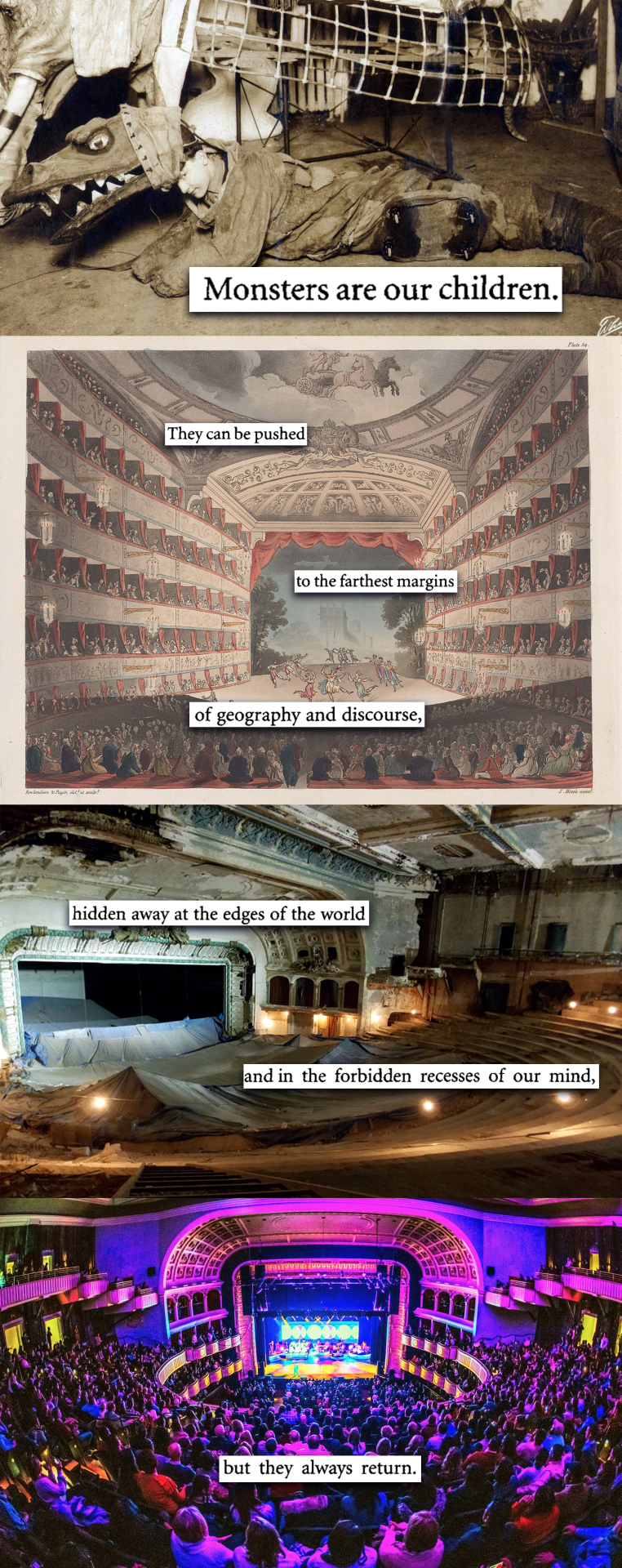


thesis vii. the monster stands at the threshold... of becoming.
-
jeffrey jerome cohen, “monster culture” / backstage at the magic flute at the metropolitan opera house, NY, circa 1905 / "opera house" by thomas rowlandson and auguste charles pugin / the philadelphia metropolitan opera house before and after renovation / porgy and bess in rehearsal at the met, dir. james robinson / tosca act 1 original set design by adolf hohenstein / tosca at the san fransisco opera, dir. shawna lucey / wozzeck at the opera bastille dir. william kentridge / carmen dir. juan guillermo nova at the sng maribor / kids music cafe at the sydney opera house / don giovanni dir. robert carsen at la scala / madama butterfly dir. matthew ozawa at the detroit opera / the isango ensemble's edition of treemonisha dir. mark dornford-may / m. butterfly dir. james robinson at the santa fe opera / die meistersinger von nürnberg dir. barrie bosky at the bayreuth festival / rigoletto dir. david mcvicar at the royal opera house / the view from the stage at the margravial opera house, photographed by klaus frahm
92 notes
·
View notes
Text

Carmen Arlene Balthrop-Delaney (May 14, 1948 - September 5, 2021) soprano and arts advocate, was born in DC to John W. Balthrop, who was employed by the Department of Justice in the Printing Office, and Clementine E. Jordan Balthrop, a homemaker. She was the youngest and only girl of four children.
She heard the legendary opera singer Leontyne Price on the radio, sparking her interest in classical music. She graduated from the University of Maryland, College Park, and received a BSM in voice performance. She earned an MSM in Voice Performance from The Benjamin T. Rome School of Music at the Catholic University of America.
She won first prize in the New York Metropolitan Opera’s National Council Auditions, one of the most prestigious competitions in opera. She played the title role in Scott Joplin’s opera Treemonisha with the Houston Grand Opera. Her Metropolitan Opera debut came in 1977 in Mozart’s opera Die Zauberflöte as Pamina. She advocated for the arts when she testified before a Senate Appropriations subcommittee supporting President Jimmy Carter’s proposed budget for the National Endowment for the Arts. She left the hearing room with loud applause as a 15‐minute recess was called for her to sing to members of Congress and congressional staffers in the hall of the Capitol.
She began teaching applied voice at the University of Maryland School of Music. She taught movement for singers, opera repertory, and an advanced seminar in vocal pedagogy. She married Dorceal Duckens (1985). She married Patrick Delaney. She had two daughters.
She was inducted into the University of Maryland’s Hall of Fame. She was the coordinator of the voice and opera division of the School of Music at that institution. She continued performing with opera companies, including Washington Opera, Deutsche Opera of Berlin, and Opera Columbus in Ohio. She sang the principal role in African American composer Leslie Burrs’ opera Vanqui. She served as the College of Arts and Humanities’ advanced professor at the University of Maryland. She was the university’s associate director for academic affairs and undergraduate studies. #africanhistory365 #africanexcellence
1 note
·
View note
Text
Treemonisha Wasn’t the Only One, James P. Johnson’s Lost Operas.
Naxos 8.669041 Regular readers of this blog are doubtless aware of my “underdog” interests. Whether suppressed by fascist regime, (as in London Records “Entartete Musik” series and Chandos “ARC”ensemble recordings), or just somehow eclipsed by more “spectacular” (by which I mean, “producing a spectacle” like Stravinsky’s Rite of Spring) but, as exemplified by Cedille Records’ “Avant L’ Orage”,…

View On WordPress
#20th century#aaron copland#African American#Anthony Davis#black composers#classical#Classical Music#Cody M. Jones#Composers#George Gershwin#James Dapogny#James P. Johnson#Jazz#Jim Crow#Kenneth Kiesler#Marc Blitzstein’s#Maurice Ravel#Music#New Music#political music#Politics#Scott Joplin#The Cradle Will Rock#unions
3 notes
·
View notes
Text
Electra was always my shameless fav because they’re such a bizarre interpretation of the most “boring” kind of train to many. I was a casual boomer train fan and had a British steam phase years ago when I first watched Thomas but never paid much attention to electric ones until I went looking for real life info to flesh out Electra. I always kind of picked up that they look and act like a bad political cartoon demonizing ~the dreaded liberal agenda~ that backfired and actually looked awesome but it wasn’t until recently when I realized that it gets deeper and more specific than that.
Even with train history context, Greaseball ans Caboose actually work about the same as on the surface. Greaseball just kind of works as a caricature of early diesel-era railroads (kicking around steam engines and HORRIBLE to passenger service) and even Caboose having weird brake van traits can be justified that cabooses irl have been used to hold equipment for remote controlling engines
Yeah environmentalism is just…. laughable as a plot when you have the real hero of net zero pinned as a villain. I am largely checked out of the post-2018 show but may try and come up with alternate theories for it after I sort out the generalized late 80s setup.
It’s a shame Stex won’t be public domain for decades because it’s technically illegal to even perform one of the more cohesive older versions, let alone heavily rework things. Especially reading about someone flipping the roles of supposed good and evil in Scott Joplin’s Treemonisha because they didn’t like the assimilationist message of the 100+ year old original, because I want to do it so badly with Stex.
Electra as a Reagan-era slander of Amtrak as a “welfare queen” (and why they would be a better fit for the OLC social messaging than Rusty)
(Yes, that term is racially loaded and I am using it very deliberately for reasons to be explained later.)
People often make fun of how Electra makes such a big deal of being electric and futuristic when electric trains are just kind of the norm in most countries with substantial rail networks. But when you take into account that toothpaste-era Electra is considerably Amtrak-coded and look into the politics and railroad history of what they’d be like irl…. Their framing goes from kind of stupid to pointedly malicious.
Caveat: this is largely based on US railroads and politics of the 70s-80s and probably not what writers intended. Starlight’s overall themes of bootstrapping and “being under your own control” are blatantly conservative and shared by Thatcher and Reagan, but she seems to have been less terrible on the train front than him. But man, things are so on the nose I really wonder if some of this was intentional.)
You know what else WAS the norm in the US (and still is in much of Europe) until Reagan started treating it as a radical freak? The big bad “liberal agenda” of the government actually funding things like social programs and infrastructure, including railroads. And you know what kind of trains are almost completely dependent on that kind of government support? Electric ones. EVERY SINGLE REPLICA NATIONAL represents a country that (at least circa the 80s) had a nationalized rail network that actually invested in electrification. It’s not impossible for private companies to fully fund themselves but very hard, especially now.
Who are “electric train politics” heavily associated with in the US? Black people, LGBT people, damn near every minority, you know, like Electra was regularly early on.
You may not realize this if you’re from elsewhere, but the US has very, very little rail electrification vs other rich countries. You have some commuter rail and local transit systems in a number of cities, the Northeast Corridor and Keystone Corridor, and that’s…. about it. Intercity service between a line of the big northeastern cities and that’s it. The rest is all diesel domain irl. Behold the wikipedia page for electrified lines in the US and see just how many are GONE. (Passenger service is also absolutely threadbare if not nonexistant in most of the non-electric network and often offensively slow, not even local road speed. But that’s a whole separate can of worms)
Why is this? Heavy simplification, but the government subsidized highways and airports instead after WWII and that along with antiquated laws and losing mail service made passenger rail a massive money pit for most the railroads forced to continue it. Instead of passenger rail service and infrastructure improving like basically all the other Nationals’ countries, routes dropped like flies and many railroads sank into financial ruin until Penn Central’s collapse in the late 60s. That’s when the government finally stepped in and took over passenger services as Amtrak. Electrification infrastructure and equipment was dated then due to years of desperate finances, and while there was active rail investment in the 70s to improve, Reagan’s administration was hostile to it and it’s been an on and off uphill battle since to get enough funding to keep things going, let alone improve or expand. Literally left decades behind by the system. The 2013 tour is the most accurate version of Electra as a realistic reflection of electric passenger rail in the US- a guy who’s been at it since the 80s that still looks like a decades-old vision of the future in a notably cheap, torn up, worn out costume. Actually the AEM-7 locomotives used then date to 1978, even older than that.
“Electra must be rich” sounds like something a stingy conservative politician would say about Amtrak needing billions of dollars (to just be barely functional due to years of neglect). Oooo handouts bad. Oooo you must be so extravagant if you need that much. You “welfare queen” sucking government funds to blow on exotic pets and glitter and other frivolities.
You “strapping young buck buying T-bone steaks with food stamps”. Those are Reagan’s quotes, not mine, I hate even typing them out but god, can it be more obvious? Painting those who need government assistance (usually coded as black) as extravagant has been weaponized to destroy social programs and further inequality.
“Or unreliable”- electric trains have so few moving parts they tend to be notably reliable in terms of the physical locomotive/multi unit*. A lot of their issues are actually due to structural failures with powerlines, and this is ESPECIALLY true with the NEC and other ooold electric commuter lines in the US. This has also limited the maximum speed of trains at times. See video below for more on this, also explains a lot of the stuff I’ve mentioned earlier. Huh. Gee whiz. Someone held back and suffering due to structural problems being blamed as personal failing. What DOES that sound like?
youtube
*technically CC 40104 used as Electra’s helmet actually was an unreliable model because it was a weird complicated niche thing with four voltages for a uniquely European situation but that’s downright cherry picking. The other Nez Casse engines with that styling actually were reasonably reliable and realistic Amtrak Electra from the 80s to 2018 would be an AEM-7 (common fanon choice too) that was also fine.
When you think about it, the likes of “only you have the power within you” and “needn’t beg the world to turn around and help you” might be the most offensive things you could say specifically to an electric train in the US besides“lol they shoulda replaced your line with even moar I-95 lanes”
Anyways, isn’t it funny how people conveniently ignore how steam preservation was actually very popular (compared to almost any other obsolete tech) in the 80s and had been since at least the 60s? You had steam engines pulling the 1976 Freedom Train. A small, relatively “young”, mechanically functional steam engine would have tourist railroads FIGHTING over them back then. That was the era when the majority of the steam engines left in Barry Scrapyard were scooped up and preserved, Crown Metal Company was making new build ones for amusement parks, and some tourist railroads even bought new builds from the last company in China building steam engines for regular service.
But you know what did go out of favor in the late 30s and was treated as downright laughable to go back to after the 50s, just like the regular revenue use of steam locos in the US?
The kind of small-government conservatism Reagan preached. And the steam engines in the show promote. Barry Goldwater was openly mocked for it in the mid-60s. It was thought genuinely unthinkable to go back to.
So, those laughably historically inaccurate depictions of electric and steam engines. Isn’t it uncanny how near-perfectly those unrealistic traits of them align with other things?
Also a funny aside: probably 90% of those new build Crown Metal steam engines were dressed up in western themes. Literally cowboy actors, just like Reagan was.
(I’ve got an extended unhinged theory about Starlight being about the rise of Reaganism and it unexpectedly spreading world over and destroying everyone else’s railroads too. That’s still in progress though. But these two aspects are so freakishly dead-on I really needed to get them out.)
#also as a side note treemonisha IS a cool example of a musical with variety of black american music genres that’s as authentic as it gets#which is a funny parallel with stex#the original lyrics are pretty terrible and dry though.
37 notes
·
View notes
Text

Grace Bumbry as Monisha in Scott JOPLIN's *TREEMONISHA* on a french production.
3 notes
·
View notes
Text
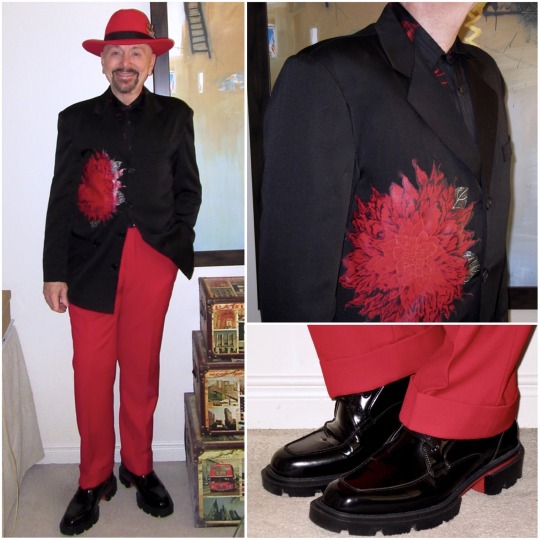
Tonight I’m excited to see Scott Joplin’s opera “Treemonisha” which fuses classical music with ragtime, folk, and gospel. It’s part of Toronto’s Luminato Festival and is produced by Volcano Theatre in association with the Canadian Opera Company, Soulpepper Theatre and Moveable Beast. 🖤❤️🖤
#menswear#sartorial#dapper#sprezzatura#mensweardaily#dapperstyle#sartorialsplendour#mensfashion#fashion#dandy
4 notes
·
View notes
Text
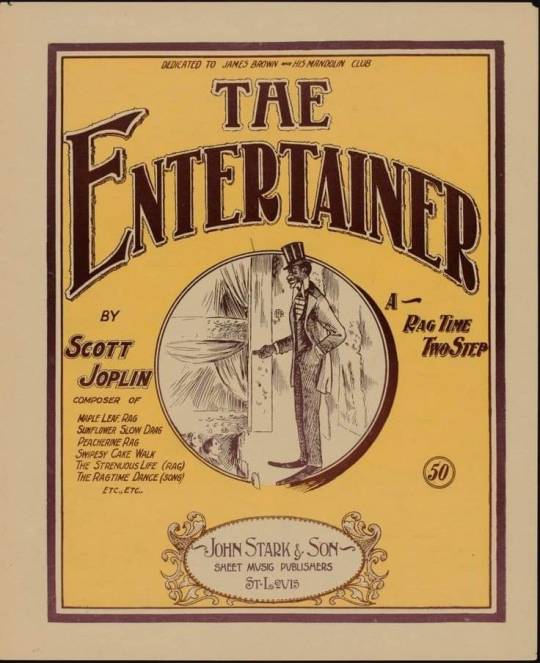
Joplin grew up in a musical family of railway laborers in Texarkana, Arkansas, and developed his own musical knowledge with the help of local teachers. While in Texarkana, Texas, he formed a vocal quartet and taught mandolin and guitar. During the late 1880s, he left his job as a railroad laborer and traveled the American South as an itinerant musician. He went to Chicago for the World's Fair of 1893, which played a major part in making ragtime a national craze by 1897.
Joplin moved to Sedalia, Missouri, in 1894 and earned a living as a piano teacher. There he taught future ragtime composers Arthur Marshall, Scott Hayden and Brun Campbell. He began publishing music in 1895, and publication of his "Maple Leaf Rag" in 1899 brought him fame. This piece had a profound influence on writers of ragtime. It also brought Joplin a steady income for life, though he did not reach this level of success again and frequently had financial problems. In 1901, Joplin moved to St. Louis, where he continued to compose and publish and regularly performed in the community. The score to his first opera, A Guest of Honor, was confiscated in 1903 with his belongings for non-payment of bills and is now considered lost.
In 1907, Joplin moved to New York City to find a producer for a new opera. He attempted to go beyond the limitations of the musical form that had made him famous but without much monetary success. His second opera, Treemonisha, was never fully staged during his life.
In 1916, Joplin descended into dementia as a result of syphilis. He was admitted to Manhattan State Hospital in January 1917 and died there three months later at the age of 48. Joplin's death is widely considered to mark the end of ragtime as a mainstream music format; over the next several years, it evolved with other styles into stride, jazz and eventually big band swing.
Joplin's music was rediscovered and returned to popularity in the early 1970s with the release of a million-selling album recorded by Joshua Rifkin. This was followed by the Academy Award-winning 1973 film The Sting, which featured several of Joplin's compositions, most notably "The Entertainer", a piece performed by pianist Marvin Hamlisch that received wide airplay. Treemonisha was finally produced in full, to wide acclaim, in 1972. In 1976, Joplin was posthumously awarded a Pulitzer Prize.🎂🖤#LovingMemory
1 note
·
View note
Link
0 notes
Text
Antonio Velardo shares: Has Scott Joplin’s ‘Thoroughly American Opera’ Found Its Moment? by Zachary Woolfe
By Zachary Woolfe “Treemonisha” — brilliant, flawed and unfinished — is ripe for creative reimagining at a time when opera houses are looking to diversify the canon. Published: July 27, 2023 at 05:01AM from NYT Arts https://ift.tt/lkWGcJz via IFTTT

View On WordPress
0 notes
Text

Louis Johnson (March 19, 1930 - March 31, 2020) was a dancer, choreographer, teacher, and director who worked across artistic genres in dance.
He was born in Statesville, North Carolina, and grew up in DC. His early dance training was with Doris Jones and Claire Haywood. In 1950, he was accepted to George Balanchine’s School of American Ballet where Black students were uncommon. Of his time in the school, he recalled:
“I had started out at the beginning and worked my way up the class levels… I was in advanced classes with Jacques d’Amboise, Eddie Villella, Melissa Hayden, Andre Eglevsky, Tanaquil LeClercq, and Maria Tallchief. They were my peers at the time… It was a learning experience like no other.”
He was not hired as a full member of the New York City Ballet, he was a guest artist and premiered a role in Ballade. He performed in Broadway shows including Four Saints in Three Acts, My Darlin’Aida, House of Flowers, Damn Yankees, and Hallelujah Baby.
He choreographed the ballet Lament for the New York City Ballet Club. This was followed by many more stagings of ballets for companies including the Dance Theatre of Harlem, Alvin Ailey American Dance Theater, Cincinnati Ballet, Joffrey Ballet, and Philadanco. One of his most famous works is Forces of Rhythm. He created the choreography for the Broadway shows: Purlie, for which he was nominated for a Tony award, Lost in the Stars, and Treemonisha. He was the choreographer for the films: Cotton Comes to Harlem, The Wiz, Tales of Erotica, and Baby of the Family.
He was a choreographer for the Metropolitan Opera for productions including La Giaconda and Aida. He directed the dance department of Henry Street Settlement. He started Howard University’s Dance Department and taught the first Black theatre course at Yale University.
His honors include the Pioneer Award from the International Association of Blacks in Dance and honor from the California chapter of the NAACP for his work with the original Negro Ensemble Company. #africanhistory365 #africanexcellence
0 notes
Photo






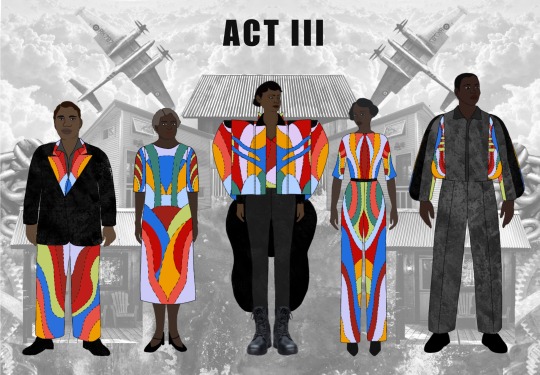
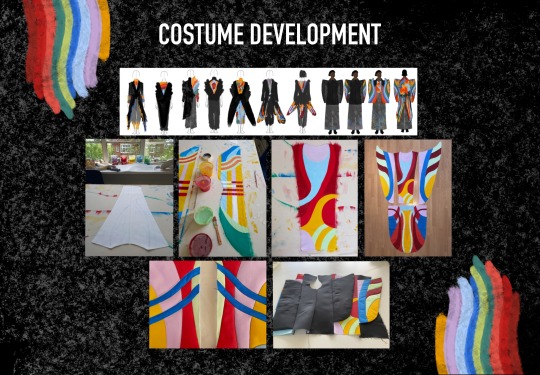
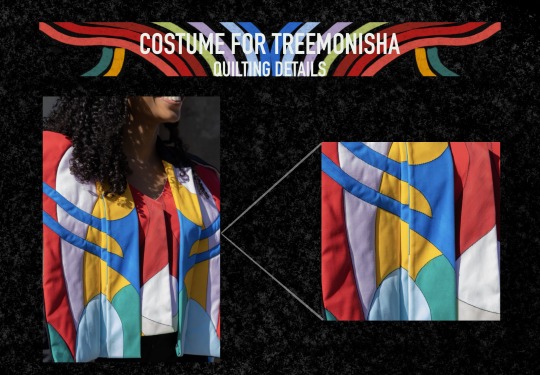
TREEMONISHA, BY SCOTT JOPLIN.
COSTUME DESIGNS.
Costume designs for Treemonisha and the other characters, and their progression through the acts. Design development and details.
Figurinos para Treemonisha e restantes personagem, e progressão ao longo dos atos. Desenvolvimento de design e detalhes.
EN
Costume project for my adaptation of the 1911 opera Treemonisha.
Originally taking place in rural postbellum Arkansas, in the 1880s, a clever African-American young woman, called Treemonisha, is elected the leader of her community of sharecroppers, after showing how superstition is the enemy of progress and knowledge and education constitute the brighter way forward.
My adaptation, though, places Treemonisha in a different time and setting: in the Auto City of Detroit, during the late 1920s, after the Great Migration that led farmer communities of the south finding their way north. Treemonisha is inspired by the first African-American female pilot, Bessie Coleman, and she is herself a pioneer and a pilot. Her family and friends are mechanics and factory workers, and the dark aura of superstition is perpetuated by Zodzetrick, a vicious sorcerer. Soon enough though, Treemonisha will prove the values of an open and innovative mind to her peers, and bring music, life and colour to the ones around her.
The concept behind the costumes is the one of emerging colours through the darkness. Starting mainly black, the costumes open panels each new act, that reveal bright and lively hues. By the end of the opera, the costumes evoke a victorious festival of colour. The garments and panels are hand painted and quilted, as an homage to the African-American tradition of quilting, which played an important role in the freedom and emancipation of former slaves.
PT
Projeto de figurinos para uma adaptação própria da ópera Treemonisha, de 1911.
Originalmente a peça toma lugar numa aldeia rural de Arkansas, após a guerra civil americana, nos anos 1880, onde uma jovem Afro-Americana corajosa e inteligente, Treemonisha, é eleita líder da sua comunidade de meeiros, depois de demonstrar como a superstição é inimiga do progresso, e a educação de todos é o caminho mais luminoso para o futuro.
Na minha adaptação, no entanto, a história desenvolve-se na cidade de Detroit (The Auto City), nos tardios anos 20, depois da Grande Migração que levou comunidades de agricultores do sul dos EUA a rumar a norte. Treemonisha é inspirada na primeira piloto Afro-Americana, Bessie Coleman, sendo ela também uma pioneira, tanto na aviação, como nos seus ideais. A sua família e amigos são, nesta adaptação, mecânicos e trabalhadores de fábricas, e a aura pesada e negra da superstição é perpetuada por Zodzetrick, um feiticeiro vicioso. No entanto, em breve, Treemonisha vai provar os valores de uma mente aberta e inovadora à sua comunidade, e trazer música e cor às suas vidas.
O conceito por trás dos figurinos tem por base as cores vivas que emergem pela escuridão. Se ao ínicio se apresentam fundamentalmente negros, os vários figurinos vão ao longo dos atos revelando novos painéis de cores vivas e vibrantes. No final da ópera, os figurinos evocam um vitorioso festival de cor. Todas as peças e painéis foram feitos e pintados à mão, e usando técnicas de quilting (colcha), em homenagem a esta tradição Afro-Americana, que teve um papel importante na libertação e emancipação de antigos escravos.
2 notes
·
View notes
Video
youtube
2 notes
·
View notes
Text
youtube
It's easy to just label it as "a ragtime opera" but there's a lot going on in Treemonisha.
As well as actually covering quite the range of musical styles with ragtime only being used in the dance interludes, it's a very interesting look into the thoughts and ideals of Joplin himself and how they're rooted in his experiences as black man in the turn of the century US.
Big themes of education and feminism vs. ignorance.
Aspects of Joplin's own life filter in too particularly in the protagonist has received her education from a white woman much like how Joplin himself with his musical education from a white teacher. This kind of unercuts things a bit but the work as a whole is interesting to watch/listen to.
Sadly his earlier opera, "A Guest of Honour" has been lost, but it was about the events surrounding Brooker T Washington's invitation to dine in the white house in 1901.
Not enough people talk about Scott Joplin's two operas.
1 note
·
View note